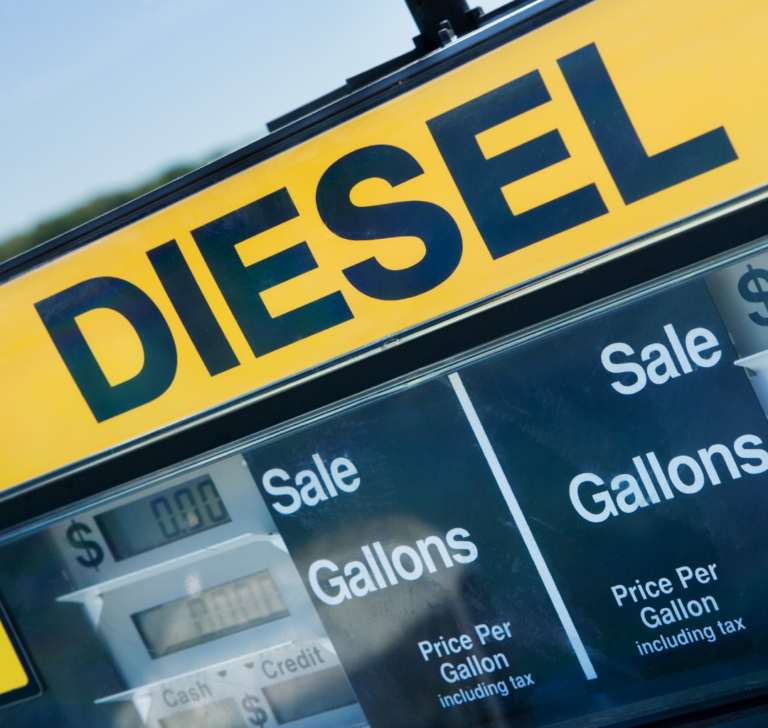Despite conflicts in the Middle East and navigation diversions in the Red Sea, oil prices remain unaffected
The average diesel price has decreased for the fifth consecutive week. According to the Energy Information Administration (EIA), this week’s average retail diesel price dropped by 4.6 cents, reaching $3.848 per gallon. Over the past five declines, the gallon price has fallen a total of 21.3 cents, reaching a level not seen since late January.
Average diesel prices by region in the United States during the week of May 13 are as follows:
- East Coast – $3.916
- Midwest – $3.768
- Gulf Coast – $3.559
- Rocky Mountains – $3.791
- West Coast – $4.551
- California – $5.123
- Central Atlantic – $4.155
- Lower Atlantic – $3.794

Renewable diesel and market dynamics
Despite conflicts in the Middle East and navigation diversions in the Red Sea, oil prices remain unaffected. However, market weakness is reflected in petroleum products, especially diesel, which is garnering increasing attention.
Diesel has become a primary reason behind the gradual decline in oil markets since mid-April. Recent weakness in oil is largely attributed to the diesel market, with a growing role for renewable diesel produced from non-petroleum feedstocks. Economist Philip Verleger notes that EIA data show U.S. distillate consumption down by 400,000 to 600,000 barrels per day compared to pre-pandemic levels, though this decline does not reflect renewable diesel consumption, as reported by FreightWaves.
Regulations from the U.S. Environmental Protection Agency have led refineries to produce more renewable diesel, reducing petroleum consumption in the country, according to Verleger. However, these trends have not been reflected in global oil demand forecasts.

In recent analyst meetings, refinery executives have highlighted the importance of renewable diesel in their operations, citing operational experience and market knowledge gained. Though the diesel crack spread has decreased over the past two months, some executives, like Valero’s Gary Simmons, argue that demand remains solid, albeit expected to be flat or slightly lower than last year, with signs of potential improvement.
Phillips 66’s Brian Mandell notes that attacks in Ukraine have affected Russia’s refining capacity, but diesel prices have been affected by warm weather in the U.S. Northeast and the end of refinery maintenance season. Product market weakness compared to crude is evident, with the Brent 3-2-1 crack spread falling to around $21 per barrel from $29 two months ago, according to CME prices.

The story of the first car race in Paris: a historic hit in 1894
Paris stands not only as a cultural and artistic epicenter but also as a pioneer in car racing In the history of automotive racing, Paris

Top states for driving in the United States in 2024
A WalletHub study compared all 50 states to determine the best driving conditions Road safety and quality are central concerns for drivers. And while the

Briefs: marijuana reclassification, vehicle fees, and climate grants
The trucking industry goes through new legislation, taxes and subsidies Questions about the proposed reclassification of marijuana The Owner-Operator Independent Drivers Association (OOIDA) supports the

Impact of traffic pollution: study reveals increase in blood pressure
A study from the University of Washington in Seattle reveals that the main cause of significant increases in blood pressure might be traffic-related gasses A

The benefits and careers of a Commercial Driver’s License
Having a CDL opens multiple doors within the trucking and transportation industry Having a Commercial Driver’s License (CDL) opens multiple doors within the trucking industry,

Sharing the road with a truck: steps to ensure your safety
Caution around blind spots and anticipating truck maneuvers are essential to ensuring everyone’s safety Truck drivers face significant challenges on the road due to their
